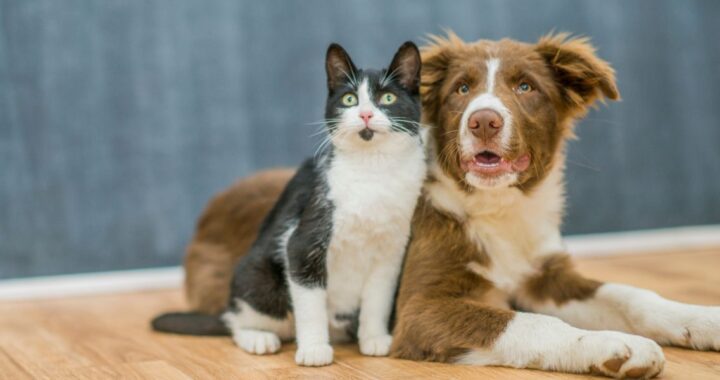Introducing your newest companion to their home is always an exciting experience. For them, it’s a world filled with an array of new smells to investigate, favorite sleeping spots to claim, and a new schedule to adjust to. As a pet parent, watching your furry friends settle into their home and personality can be as nail-biting as it is rewarding, especially when other animals are present. Similar to most people, first impressions also matter to cats and dogs. Here is some information to help ensure your pets have a smooth introduction.
Preparation
Safety should always be your number one priority when bringing new pets into your home. The first precaution to take during this process is confinement. Until they are cleared by a veterinarian, you will want to keep your pets separated. You will want to ensure that your dog has basic obedience commands, such as ‘sit’ and ‘stay’ mastered. In the process of preparing for a good introduction, your cat will need a dog-free zone in the house. This can look like setting your cat up in a bathroom or spare bedroom. Keep your pets separately confined when you aren’t home to ensure that there is no opportunity for an unsupervised introduction.
The next step to preparing your pets to be introduced is having their scents swapped. This will allow your pets to get used to each other a little without having to meet. One option is to start by taking separate socks (one per animal) and rubbing them around each animal’s whiskers and under their chins. When this is done swap their socks with each other. You can use items that your pets naturally get their scent on (bedding, toys, etc). While they investigate each other’s scents, you will want to reinforce positive behavior with treats and praise.
Next, set up their feeding spots on the opposite sides of the same door. Start by placing each bowl 4ft away from the closed door. Gradually move their bowls closer to the door day by day. If your pet exhibits negative behavior, take this step in the process slowly. Continue moving the bowls until there is no longer a fuss during their meal times. As your pets become more comfortable, introduce the scent socks to their meal times by putting them right next to their food bowls. Next, you can start swapping beds and toys.
The Introduction
When it’s time for the introduction, hold it in an area other than your cat’s confinement space. There are a couple of ways to go about this initial interaction. The first option is to have your dog on a leash and allow your cat to free roam. While initiating the introduction, you will want to keep your dog well-behaved and preoccupied with treats and simple commands. During this short introduction, give your cat plenty of escape routes and reward good behavior. Bring the visit to an end before either of your pets exhibit negative behavior.
When allowing the dog into the area where the introduction takes place, make sure to pay attention to signs of distress. If it is clear either pet is becoming agitated, stop the interaction. Throughout their introduction, praise your dog for good behavior, while gradually increasing the requirements to be rewarded. Start by rewarding your dog for looking away from your cat and work towards praising them for walking away. This will teach your dog how to leave your cat alone. Keep doing this until your dog can be in the same room as your cat without investigating it.
Once your pets can settle into the same area and exhibit typical behavior, allow both to free roam in the same room. During this point of socialization, attach your dog’s leash to its collar and allow it to drag on the floor, allowing you to get a hold of your dog if it attempts to chase your cat. After at least a month of supervision, once you are confident your pets won’t harm each other, allow them to have unsupervised interactions. Finally, remember to exhale and enjoy the beginning of a new furriendship between your pets!




